The Honeysuckle is highly prized for its beautiful flowering in warm hues and the delightful fragrance of its flowers. Additionally, this very easy-to-grow climbing plant boasts rapid growth. It can be cultivated in large pots or directly in the ground, making it perfect for covering a trellis, pergola, or any other support. These are all great reasons to propagate it. Two different techniques can be used at different times of the year: semi-woody cutting propagation and hardwood cutting propagation. Follow our step-by-step tutorial to successfully propagate your Honeysuckle.
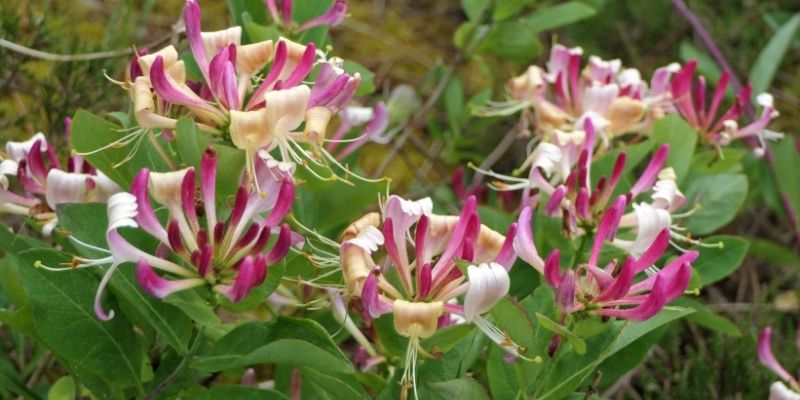
When to propagate Honeysuckle?
Propagation can be done at two times of the year, depending on the type of cutting used:
- In August or September, semi-woody cuttings can be taken. These are shoots from the current year's growth, also known as semi-hardwood cuttings. They can be identified by their tender, flexible tips and firmer, brown bases. These young spring shoots lignify in summer, transitioning from softwood to hardwood.
- The other method involves using autumn cuttings, with or without leaves. This is done from October to November by taking hardwood cuttings from well-ripened wood of the current year.
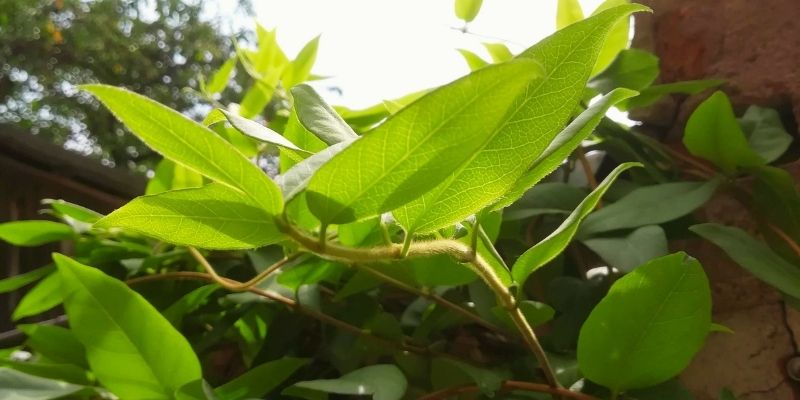
Healthy semi-woody shoot
Required materials
- a pruning shear
- preferably a terracotta pot
- a cloche, a plastic bottle without a base, a bag, or a mini greenhouse
- seed and potting compost
- river sand
- clay pebbles
- a pencil
- a rooting hormone (optional)
- a spray bottle
How to take a semi-woody Honeysuckle cutting?
Prepare the pot
Proceed from August to September. Place a layer of clay pebbles at the bottom of the pot, then fill it with seed and potting compost. A mix of universal compost and sand also works. Use a pencil to make a hole in the substrate, then water.
Take the semi-hardwood cutting
- First, choose a healthy shoot from the current year, firm at the base and flexible at the tip;
- Cut this shoot to use as a cutting;
- Shorten it to about 10-15 cm using a sharp and disinfected pruning shear: cut the base of the stem at an angle below a node (leaf insertion point) and cut the other end of the stem above a node, leaving 1 cm of stem.
- Remove the lower leaves by cutting them flush with the stem. Keep only the upper leaves, which you should halve by cutting them with the pruning shear.
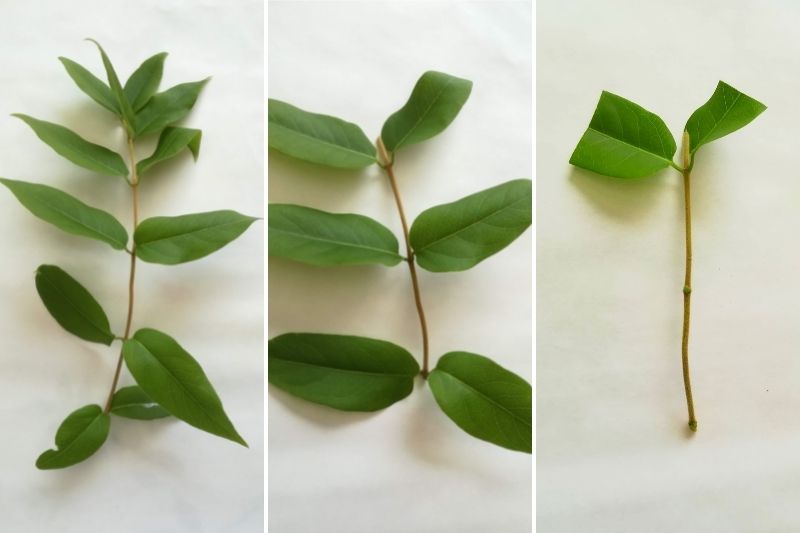
Propagate under cover
To stimulate rooting, you can optionally dip the base of the cutting in rooting hormone powder.
- Insert your cutting into the hole previously made in the substrate and push it in about two-thirds of its length;
- Firm the soil around the cutting to ensure good contact with the compost and water gently;
- Place your pot under a cover: cloche, mini greenhouse, plastic bottle, or bag held upright with sticks inserted into the compost. The plant should not touch the sides, as this could cause rotting;
- Place the pot outdoors, in partial shade and sheltered from the wind;
- Remove the cover after three weeks;
- Mist occasionally without overdoing it until early autumn;
- During winter, leave the pot outside, still sheltered from wind and frost.
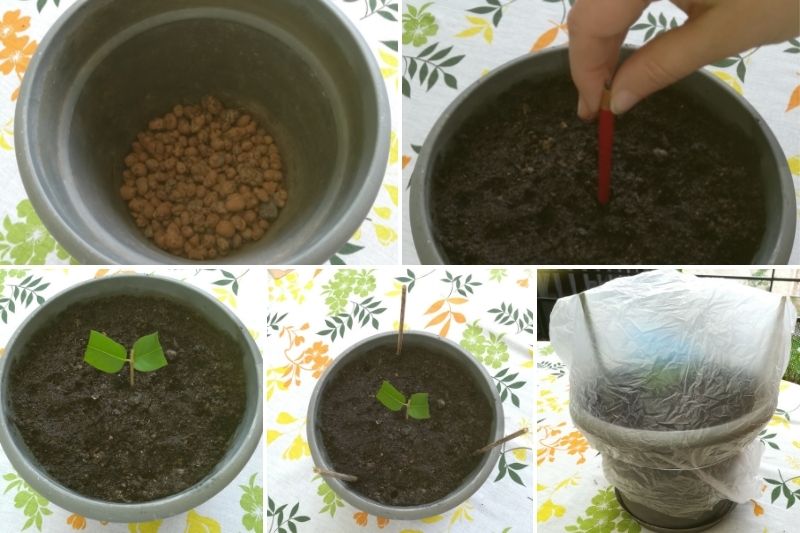
Honeysuckle cutting under cover
How to take an autumn Honeysuckle cutting?
Also known as hardwood cutting, this technique is practised from autumn to early winter, avoiding frost periods. The cuttings are usually placed directly in the ground, preferably near a north-facing wall. However, this method can also be done in a large container covered with a cold frame. Deciduous species will have few or no leaves at this time.
In the ground:
Prepare your trench:
- Dig a trench about 12-15 cm deep with sloping sides forming a V shape.
- Spread a layer of river sand or seed compost at the bottom.
- Mix sand with the soil removed from the trench.
Take the hardwood cutting:
- Select a healthy, vigorous shoot from the current year, about 30 cm long and as thick as a pencil.
- Shorten the shoot to about 15 cm: cut the base at an angle below a node and the other end above a node.
- For evergreen species, remove the lower leaves from the bottom two-thirds of the shoot and halve the remaining upper leaves.
- Moisten the base of the cutting and dip it in rooting hormone.
- Prepare several cuttings to increase your chances of success.
Plant your hardwood cuttings:
- Place your cuttings at an angle against the sides of the trench, facing the wall, spacing them 15 cm apart.
- Bury them two-thirds of their length using the substrate prepared earlier.
- You can also group cuttings in bundles of five to save space.
- Gently firm the soil, water, and label your cuttings.
- Add mulch and leave them in place over winter.
Under a cold frame:
Follow the same steps for taking cuttings. However, they will be placed in a large container or deep pots. Insert the cuttings individually, spaced 10 cm apart and near the edge of the pot or container. Cover with a cold frame.
When to transplant Honeysuckle?
Transplanting can be done the following spring, in April-May. The presence of buds and small leaves on the cuttings is a sign of successful rooting. You can then carefully remove the cuttings that have developed small roots.
Transplant the hardwood cuttings into pots and the semi-woody cuttings into larger pots. Always place your pots against a sheltered wall and water them regularly to keep the substrate moist.
The Honeysuckle cuttings can be planted in their final location in the ground in autumn. Water them at planting time and regularly during the first year.
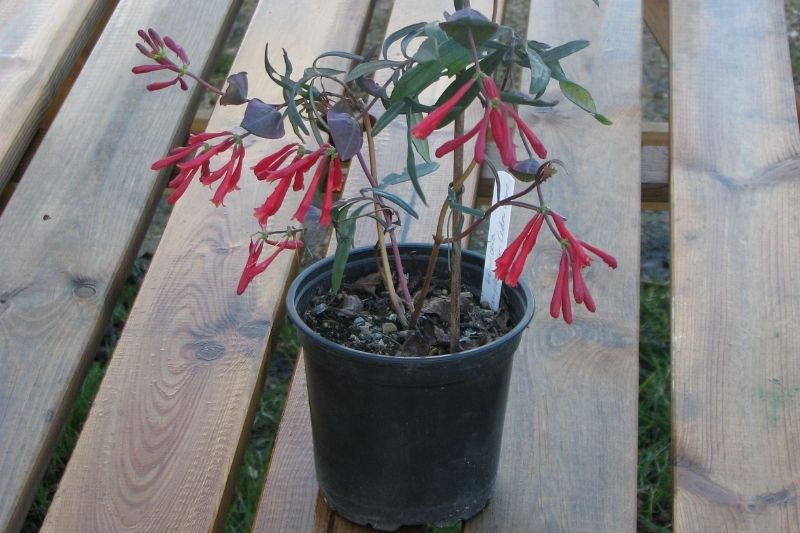
Lonicera sempervirens 'Cedar Lane' cutting ready for transplanting into the ground (photo peganum - Flickr)
Further reading
- Check out our guide on Honeysuckle: planting, pruning, and care
- Discover our selection of the most fragrant honeysuckles.
































Comments